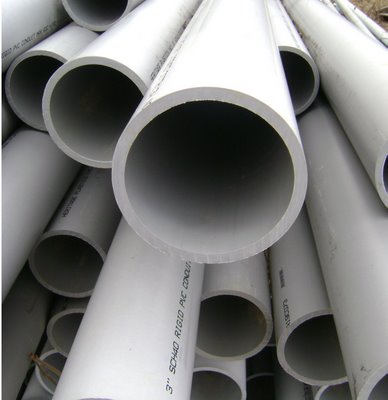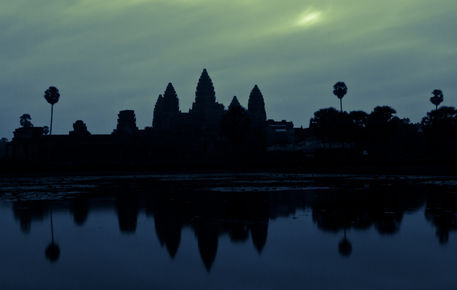Discussion:
In the topic of photography there are a list of formal elements used to describe the little things that photographers can see in the everyday photo. Lines, Tone, Colour, Shape, Pattern, Blurring, Texture, and Movement. In this essay I shall talk about each one of these individually, and how they all contribute towards the everyday photograph in the eyes of a photographer.
Lines:

Lines are used in photography for a number of reasons, but the most common use is to show structure within a photograph. The official dictionary definition of structure is 'the arrangement of and relations between the parts or elements of something complex'. This, for example, could be a building structure or a road structure, but in most types of structure, lines are shown. This picture is a prime example of what would be classified as a photograph of a structured building with lines present.
Colour:
Texture:

Texture is very similar to one of the other formal elements, pattern, in the respect that most textures on clothing, for example, tend to repeat. Knitted Jumpers are an example of something with a soft texture, and if photographers were trying to capture anything to do with touching or feeling, then by taking a picture of something like this, we can instantly make a connection to how it feels from real life experience. The official dictionary definition for texture is the feel, appearance, or consistency of a surface or a substance.
Shape:
 Shapes are in every photograph taken, for shapes cannot be avoided. If, for example, a photographer was to take a picture of a street, many shapes, either 2 dimensional (square, circle) or 3 dimensional (cube, sphere) would be present. Therefore, locating shapes isn't a huge concern for photographers, due to the ease in which they can find them. The official dictionary definition for shape is the external form, contours, or outline of someone or something.
Shapes are in every photograph taken, for shapes cannot be avoided. If, for example, a photographer was to take a picture of a street, many shapes, either 2 dimensional (square, circle) or 3 dimensional (cube, sphere) would be present. Therefore, locating shapes isn't a huge concern for photographers, due to the ease in which they can find them. The official dictionary definition for shape is the external form, contours, or outline of someone or something.Movement:
 Movement is quite a difficult thing for a photographer to capture without including blurriness, for a camera can rarely take a picture of something that is moving at a fast rate. So, for example, if a photographer was trying to take a picture of a bird in flight, they might find it difficult to be able to keep within the shot of the bird as well as taking a good, sharp, clear picture of it. The slower the object/person/animal is moving, the more likely the photograph will not end up blurry. The official dictionary definition of movement is to go in a specific direction or manner or to change position.
Movement is quite a difficult thing for a photographer to capture without including blurriness, for a camera can rarely take a picture of something that is moving at a fast rate. So, for example, if a photographer was trying to take a picture of a bird in flight, they might find it difficult to be able to keep within the shot of the bird as well as taking a good, sharp, clear picture of it. The slower the object/person/animal is moving, the more likely the photograph will not end up blurry. The official dictionary definition of movement is to go in a specific direction or manner or to change position.Form:
Pattern:
 Patterns are quite easy to come across in every day life, for it is just something that reoccurs occasionally. An example could be a simple brick building. Each brick is different but looks the same, and tends to be in the same positioning. Photographers would not find patterns a challenging task in most environments, due to this. The official dictionary definitions for 'pattern' are a repeated decorative design, or a regular and intelligible form or sequence discernible in the way in which something happens or is done.
Patterns are quite easy to come across in every day life, for it is just something that reoccurs occasionally. An example could be a simple brick building. Each brick is different but looks the same, and tends to be in the same positioning. Photographers would not find patterns a challenging task in most environments, due to this. The official dictionary definitions for 'pattern' are a repeated decorative design, or a regular and intelligible form or sequence discernible in the way in which something happens or is done.Depth:
 Depth is yet another rather difficult formal element to capture due to is vagueness. However, a lot of photographers, if told to take pictures of depth, would take a picture of something going from bigger to smaller, or something that appears as if it is ongoing. An example of this could be a corridor or a brick wall or a plant pot. Once the actual definition of depth is understood, it is relatively easy to find it within nature, or man made buildings. The official dictionary definition for depth is the distance from the top or surface to the bottom of something, or the quality of being intense or extreme
Depth is yet another rather difficult formal element to capture due to is vagueness. However, a lot of photographers, if told to take pictures of depth, would take a picture of something going from bigger to smaller, or something that appears as if it is ongoing. An example of this could be a corridor or a brick wall or a plant pot. Once the actual definition of depth is understood, it is relatively easy to find it within nature, or man made buildings. The official dictionary definition for depth is the distance from the top or surface to the bottom of something, or the quality of being intense or extremeTone:

Tone is the last difficult formal element to capture. When photographers refer to the word tone, they are talking about the difference between the lightest and darkest areas of the environment, so tone can be linked to form and colour as well. An example of tones that might be located in natural environments is in a flower field, where each tone of flower is different. The official dictionary definition for tone is to harmonize with (something) in terms of colour.
Blurring:

Blurring is actually quite a simple formal element to capture due to the easiness it takes to blur a photograph. It is much easier for the photographer to blur the photograph rather than keep it sharp and clear, for all that is required is movement in the right places. Most of the time, blurriness looks very bad on a photograph, but it can be seen as an artistic skill if there is something sharp and clear in it at all, for then all the focus is on that particular detail.
Reflection:
 The last formal element I will be talking about is reflection. This is simply the physical replication of something. An example of something that would give off a reflection is a mirror. Mirroring effects are very useful for photographers that want to capture something quite unnatural looking. Mirroring effects can also be obtained in a lot of editing softwares, so the photographer may not even attempt to find any form of reflection within their environment. The official dictionary definition of refection is the throwing back by a body or surface of light, heat, or sound without absorbing it.
The last formal element I will be talking about is reflection. This is simply the physical replication of something. An example of something that would give off a reflection is a mirror. Mirroring effects are very useful for photographers that want to capture something quite unnatural looking. Mirroring effects can also be obtained in a lot of editing softwares, so the photographer may not even attempt to find any form of reflection within their environment. The official dictionary definition of refection is the throwing back by a body or surface of light, heat, or sound without absorbing it.
No comments:
Post a Comment